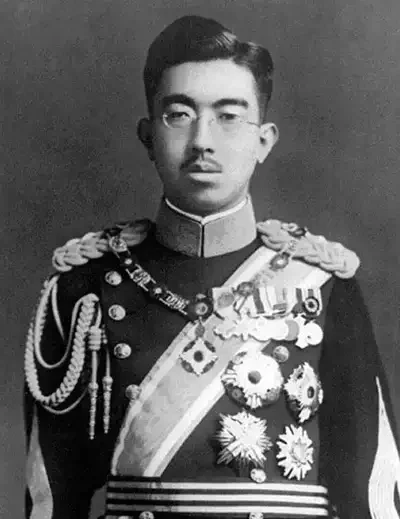- Military History
- Biographies
- Politicians Biographies
- Emperor Hirohito of Japan
Emperor Hirohito of Japan
Emperor of Japan (also known by his posthumous name, Emperor Shōwa) that was detested by the Allies
Emperor Hirohito (born in 1901) reigned as emperor of Japan from 1926 until his death in 1989. Revered as divine by his people, he had little to do with the actual governing of his country, his authority stifled by pomp and pageantry. During World War II, he held the title of commander-in-chief of the armed forces, though almost all military affairs were handled by others.
Hirohito was born in Tokyo as the eldest son of Crown Prince Yoshihito. Beginning in 1914, he was educated at a palace school created to prepare him for his future role as emperor.
Hirohito became the first Japanese crown prince to visit the West when he toured Europe for six months in 1921. During his trip, he expressed great interest in British culture and tradition and was particularly attracted to the concept of a constitutional monarchy as characterized by King George V. When Hirohito became emperor in 1926; he called his dynasty Showa - meaning peace and enlightenment.
Under the Japanese constitution of 1889, Hirohito held a tremendous authority that derived from the belief that the Japanese imperial line descended from Amaterasu, the sun goddess of the Shinto religion, and had ruled the nation forever. However, Hirohito's authority was primarily symbolic; he was trained by his advisers to not interfere in political decisions. He remained uninvolved in politics and avoided public controversy, refraining from taking a stand on almost any public issue.
In most cases, Hirohito merely approved the policies of his advisers and ministers, which were then adopted in his name.
Because the day-to-day governing of his nation was controlled by militarists, it came as no surprise that Japan instituted an aggressive foreign policy as it sought alternative sources for needed natural resources. And though Hirohito had little influence on most military issues, he was not completely removed from his nation's aggression. He approved several important Japanese cabinet decisions, including the 1937 invasion of China and the attack on Pearl Harbor.
In an oral autobiography published after his death, Hirohito said he was powerless to stop the militarists because any dissent on his part would have led to his assassination. He also denied knowledge of many of the atrocities committed by Japan during the war, though Western biographers have uncovered evidence that he knew of and did nothing to stop them. Like the Bataan Death March and the execution of American airmen captured after the Doolittle raid on Tokyo.
Hirohito and Hideki Tojo were as detested by the Allies as Hitler and Mussolini during World War II, and many people expected the emperor to be tried for war crimes after the fighting was over. However, Allied officials felt it was necessary that Hirohito remain emperor to maintain political calm in postwar Japan, and neither he nor his immediate family (which included many high-ranking military officers) were ever questioned about their potential involvement in or knowledge of Japan's wartime activities or put on trial.
When Emperor Hirohito of Japan died in 1989, he was buried with several of his favorite possessions, including a microscope and a Mickey Mouse watch, which he had received during a 1975 visit to the United States.
Emperor Hirohito of Japan - Quick Facts
- Second Sino-Japanese War (1937-1945)
- WWII (1939-1945)
- Pacific War (1941-1945)
- {{#owner}}
- {{#url}} {{#avatarSrc}}
{{name}} {{/url}} {{^url}} {{#avatar}} {{& avatar}} {{/avatar}} {{name}} {{/url}} - {{/owner}} {{#created}}
- {{created}} {{/created}}
























